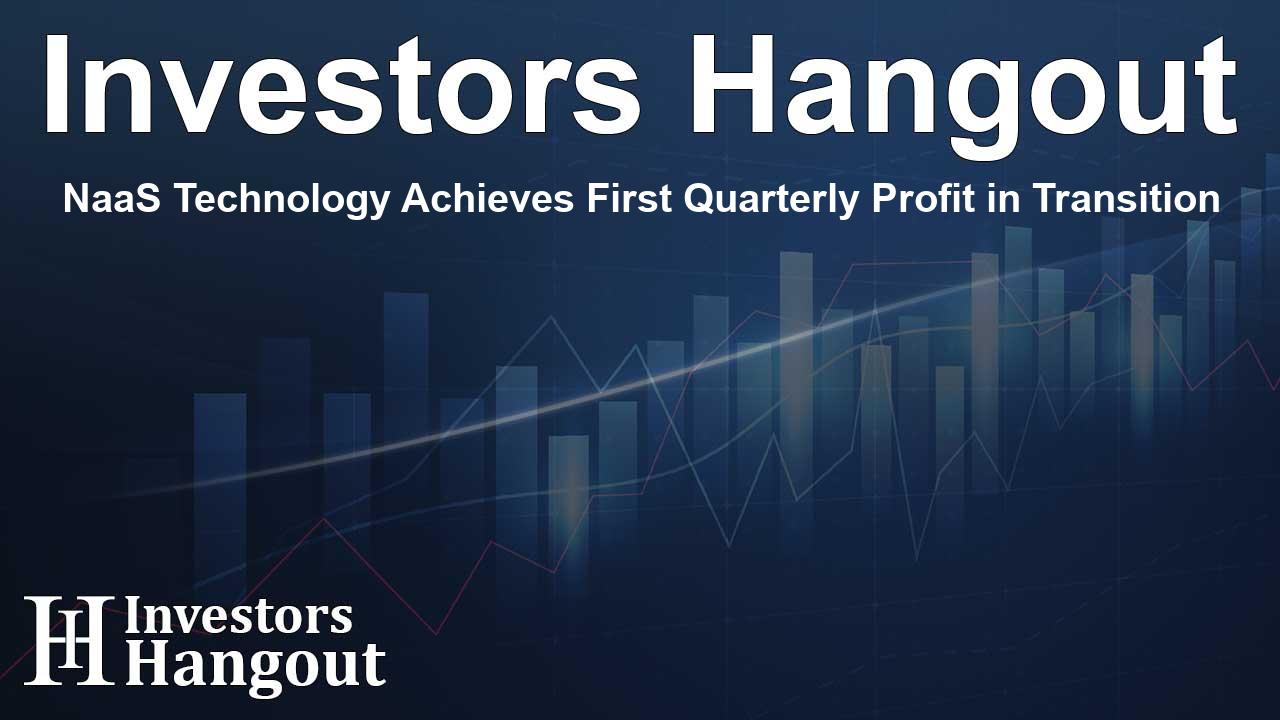NaaS Technology Achieves First Quarterly Profit in Transition

NaaS Technology Achieves Historic Profit Amid Strategic Changes
NaaS Technology Inc. has recently made an impressive breakthrough, reporting its first-ever non-IFRS quarterly profit during its latest financial results. This success reflects a profound transformation as the company pivots towards more profitable avenues in the rapidly evolving Electric Vehicle (EV) charging sector.
Key Performance Indicators
In the latest quarter, the company achieved a historic gross margin, indicating a shift in their operational focus. By transitioning from their traditional low-margin, offline business model to a more lucrative strategy centered on platform-based management services, NaaS has effectively enhanced profitability. This change has been vital in responding to investors' demands for immediate returns rather than just expansion.
Operational Shifts and Their Impact
The company made a deliberate decision to wind down its lower-margin energy solutions to concentrate on core charging services, which is proving to be a lucrative business venture. NaaS reported a gross margin that surged to a record 57% during the third quarter, a significant leap from 38% the previous quarter and just 29% from one year prior.
Financial Highlights
NaaS recorded a non-IFRS profit of 21.2 million yuan (approximately $2.9 million), excluding certain non-operational costs. Although the company is still operating at a net loss, the recent figures reveal a stark improvement. The net loss of 7.7 million yuan this quarter reflects a drastic reduction compared to the 367 million yuan loss reported a year earlier.
CEO Insights
The CFO, Steven Sim, articulated the strategic shift during an earnings call, emphasizing how they have intentionally moved away from capital-intensive projects. This focus on higher-margin services has significantly improved their gross profit margin, aligning with the demand for sustainable profitability.
Market Performance and Stock Reaction
After announcing these promising results, NaaS shares experienced a minor decline of 1.5% on Nasdaq. Despite this fluctuation, the stock had rallied 17% in the preceding week. The transition strategy towards a more sustainable business model appears to be a cornerstone of their future direction.
Future Prospects in the EV Market
With the global emphasis on green technology and electric vehicles, NaaS is strategically positioned to capitalize on the increasing need for efficient charging solutions. The infrastructure in China’s EV market offers tremendous growth prospects, with the nation now representing over half of the global new energy vehicle sales.
Partnerships for Expansion
To further enhance its market position, NaaS has begun forming strategic partnerships with major players. Recent collaborations with regional EV charging operators and leading automotive companies underline NaaS's commitment to expanding its network and service offerings in the sector.
A Transformative Journey
As NaaS embraces this transition toward profitability, it highlights the larger trend within the Chinese corporate landscape moving towards efficiency and accountability. This change is particularly relevant in an industry characterized by rapid technological evolution and increasing competition.
Conclusion: Looking Ahead
Reflecting on its transformative journey, NaaS Technology Inc. aims to capture more market share within the EV charging space by focusing on operational efficiencies and customer-centric services. With visionary leadership and innovative strategies, the company is poised for potential growth in the coming years. The reality remains that achieving rapid revenue growth will be essential to competing against established brands like ChargePoint (CHPT) and Blink Charging (BLNK), who currently enjoy higher market valuations.
Frequently Asked Questions
What is NaaS Technology Inc.'s recent financial achievement?
NaaS Technology Inc. reported its first-ever non-IFRS quarterly profit, indicating a significant operational shift towards more profitable services.
How did NaaS improve its gross margin?
By focusing on platform-based management services and winding down lower-margin operations, NaaS successfully increased its gross margin to 57% in the recent quarter.
What strategic changes did NaaS Technology implement?
NaaS transitioned from an asset-heavy infrastructure model to concentrate on core charging services that generate higher profits.
What are the prospects of NaaS in the EV market?
With a focus on partnerships and operational efficiency, NaaS is well-positioned to leverage China's growing EV market, which significantly contributes to global growth.
How does NaaS Technology's financial performance compare to its competitors?
Despite reporting net losses, NaaS's transition to more profitable operations will be crucial in competing against established players like ChargePoint and Blink Charging.
About Investors Hangout
Investors Hangout is a leading online stock forum for financial discussion and learning, offering a wide range of free tools and resources. It draws in traders of all levels, who exchange market knowledge, investigate trading tactics, and keep an eye on industry developments in real time. Featuring financial articles, stock message boards, quotes, charts, company profiles, and live news updates. Through cooperative learning and a wealth of informational resources, it helps users from novices creating their first portfolios to experts honing their techniques. Join Investors Hangout today: https://investorshangout.com/
Disclaimer: The content of this article is solely for general informational purposes only; it does not represent legal, financial, or investment advice. Investors Hangout does not offer financial advice; the author is not a licensed financial advisor. Consult a qualified advisor before making any financial or investment decisions based on this article. The author's interpretation of publicly available data shapes the opinions presented here; as a result, they should not be taken as advice to purchase, sell, or hold any securities mentioned or any other investments. The author does not guarantee the accuracy, completeness, or timeliness of any material, providing it "as is." Information and market conditions may change; past performance is not indicative of future outcomes. If any of the material offered here is inaccurate, please contact us for corrections.